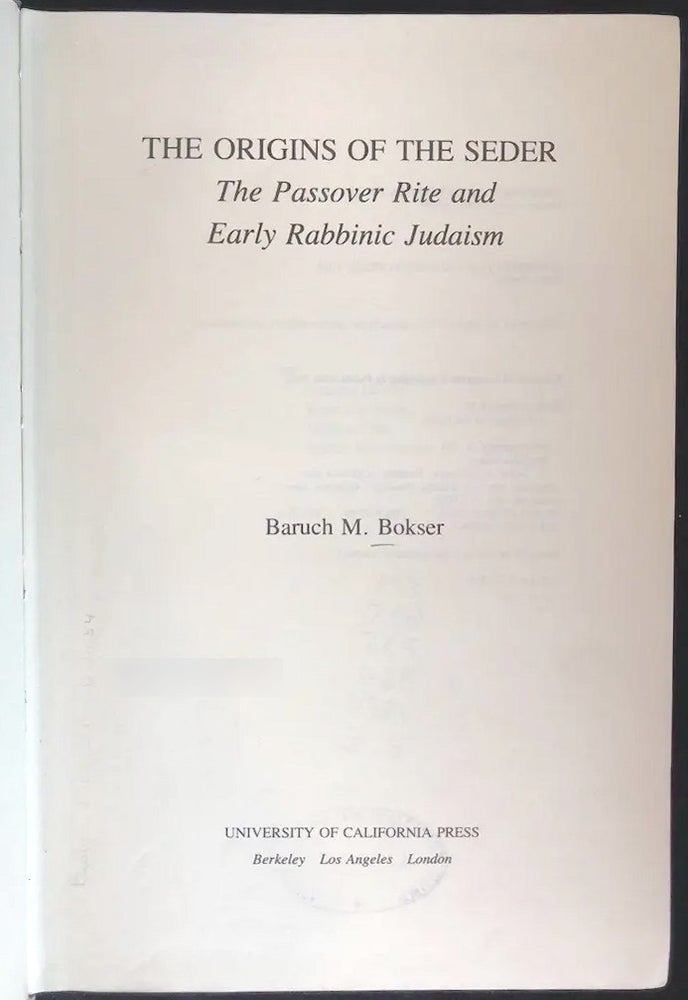
THE ORIGINS OF THE SEDER: THE PASSOVER RITE AND EARLY RABBINIC JUDAISM
Berkeley, U of California Press, 1984. Item #39648
used good condition; Original Cloth, xix, 188 pages, illustrated, 24 cm. The Passover and its rite are central in the history of Judaism and Christianity. Explaining how the Passover evening celebration, the seder, became one of the most popular Jewish rituals, Baruch M. Bokser shows how it was based on and transformed a biblical sacrificial meal. Bokser demonstrates the significance of the motif of Passover in ancient Judaism, indicating why Jews and Christians employed it to express hopes for redemption. And he also illuminates the process of historical development through the interaction of a traditional heritage with contemporary and outside cultural influences. This is a fascinating book which will add much to our understanding of Judaism and Christianity and of the nature of religion in a changing world. Baruch Bokser was ordained as a rabbi at Jewish Theological Seminary and also received a Ph. D. In religious studies from Brown University. Beginning in 1974, he taught at the University of California at Berkeley, leaving in 1982 for Dropsie College in Philadelphia (now the Annenberg Research Institute for Judaic and Near Eastern Studies) . Then in 1986, Bokser returned to the Jewish Theological Seminary to join the faculty and where, at his early death at age 44 in 1990, he was the director of the program in ancient Judaism. "Packs facts, analysis and insight into its relatively short 141 pages of text and footnotes. The hypothesis and argument are clearly spelled [out] and and then supported by detailed references to various Talmud and Mishnah sections which are reproduced as necessary. Although...reprinted in 2002, it is current and consistent with more recent works. I read the book in the weeks leading up to 2009 Passover holidays and found much in Dr. Bokser's work to work into the actual Seder and ignite the interest of those present. In essence, Dr. Bokser makes a very persuasive case that the Passover Seder, as molded in the Hagaddah, was one of the key pillars for the survival of Judaism after the catastrophic destruction of the Second Temple in 70 C. E. Certainly, he establishes that the basics of the Seder as we know it today with its emphasis on freedom, community and symbolic ritual owes its genesis to the Tanna and the Amora of the centuries following the destruction" (Jerome Hoffman, Amazon review) . SUBJECT(S) : Seder. Sederabend. Seder-Feier. Judaism; Mishnah; Special subjects: Seder. Mishnah. Pesahim -- Criticism, interpretation, etc. Tosefta. Pesahim -- Criticism, interpretation, etc. Mishnah -- Criticism, interpretation, etc. Mishna. Pesahim -- Critique, interpretation, etc. Tosefta. Pesahim -- Critique, interpretation, etc. Mishnah. Mo’ed. Pesahim. Tosefta. Includes indexes. Bibliography on pages 149-181. Ex-library with usual marks. Good Condition (HAG-21-3).
Price: $100.00

